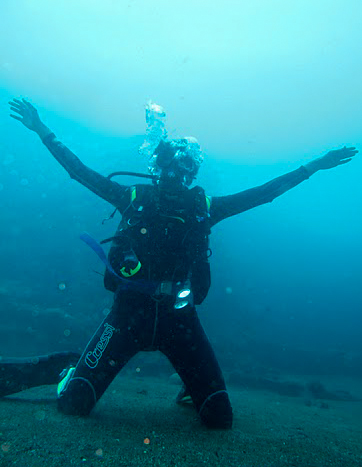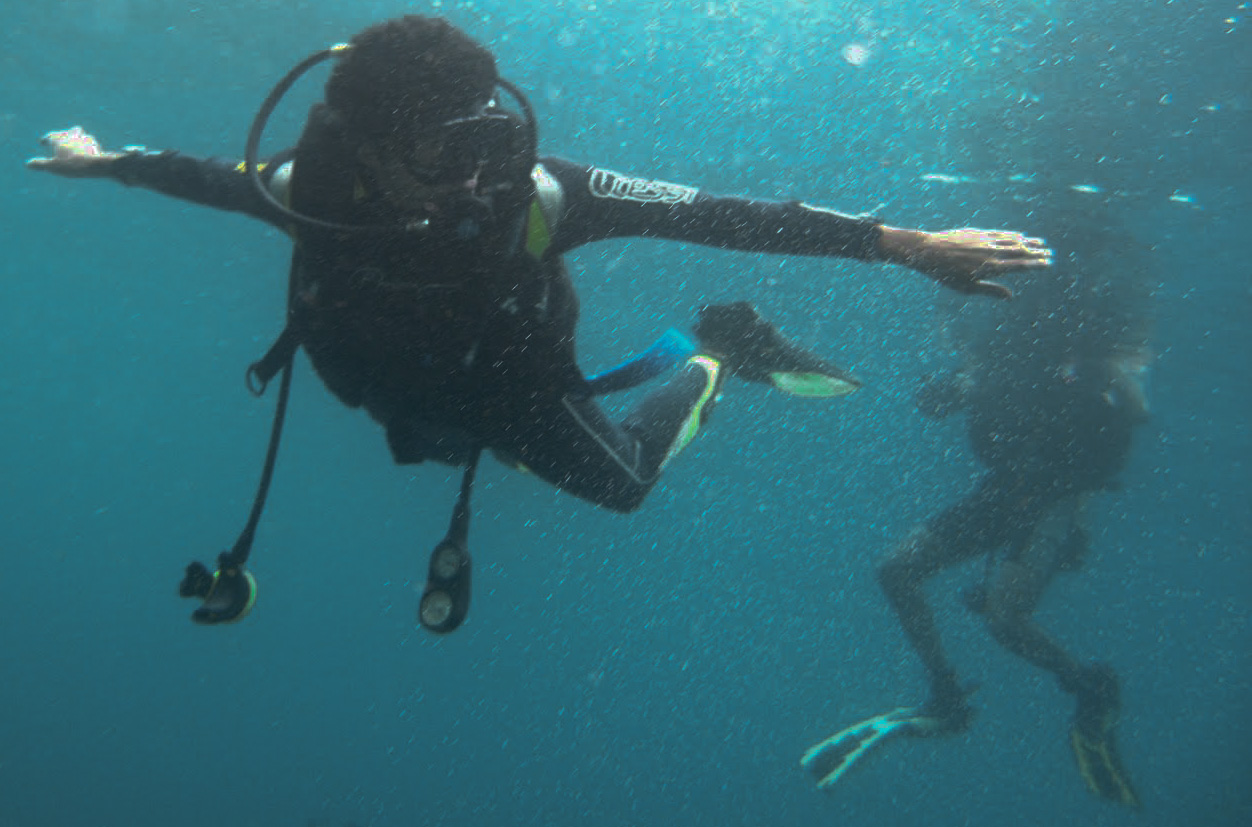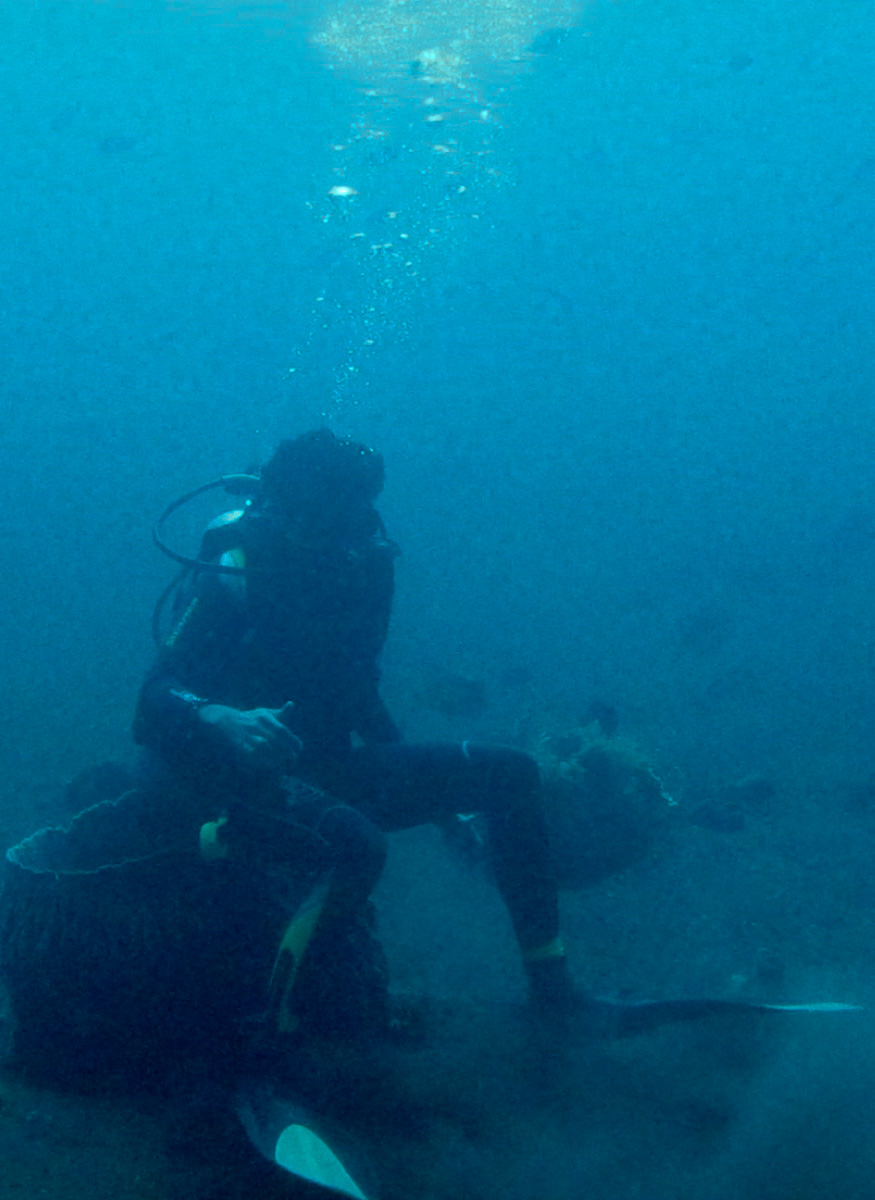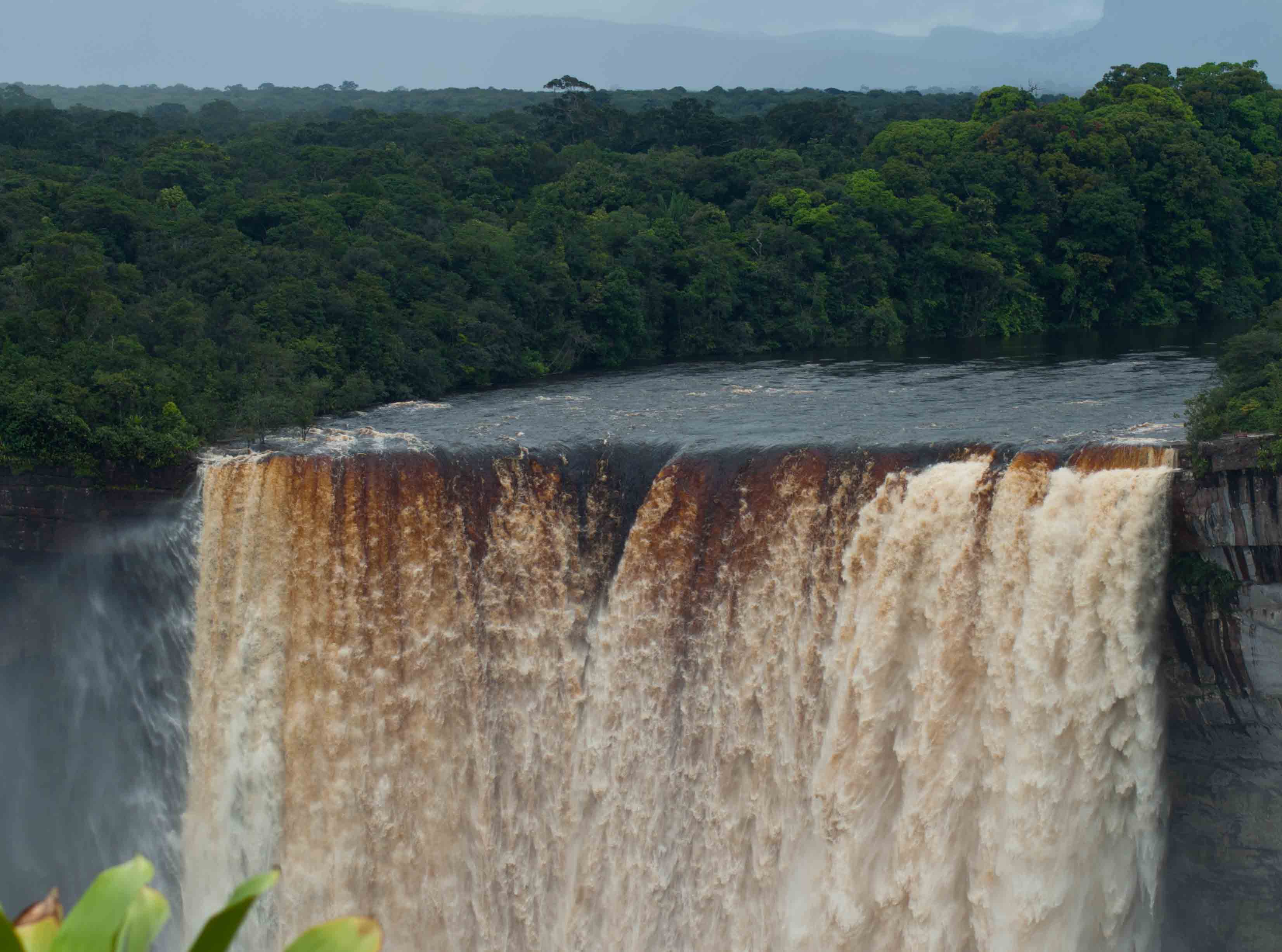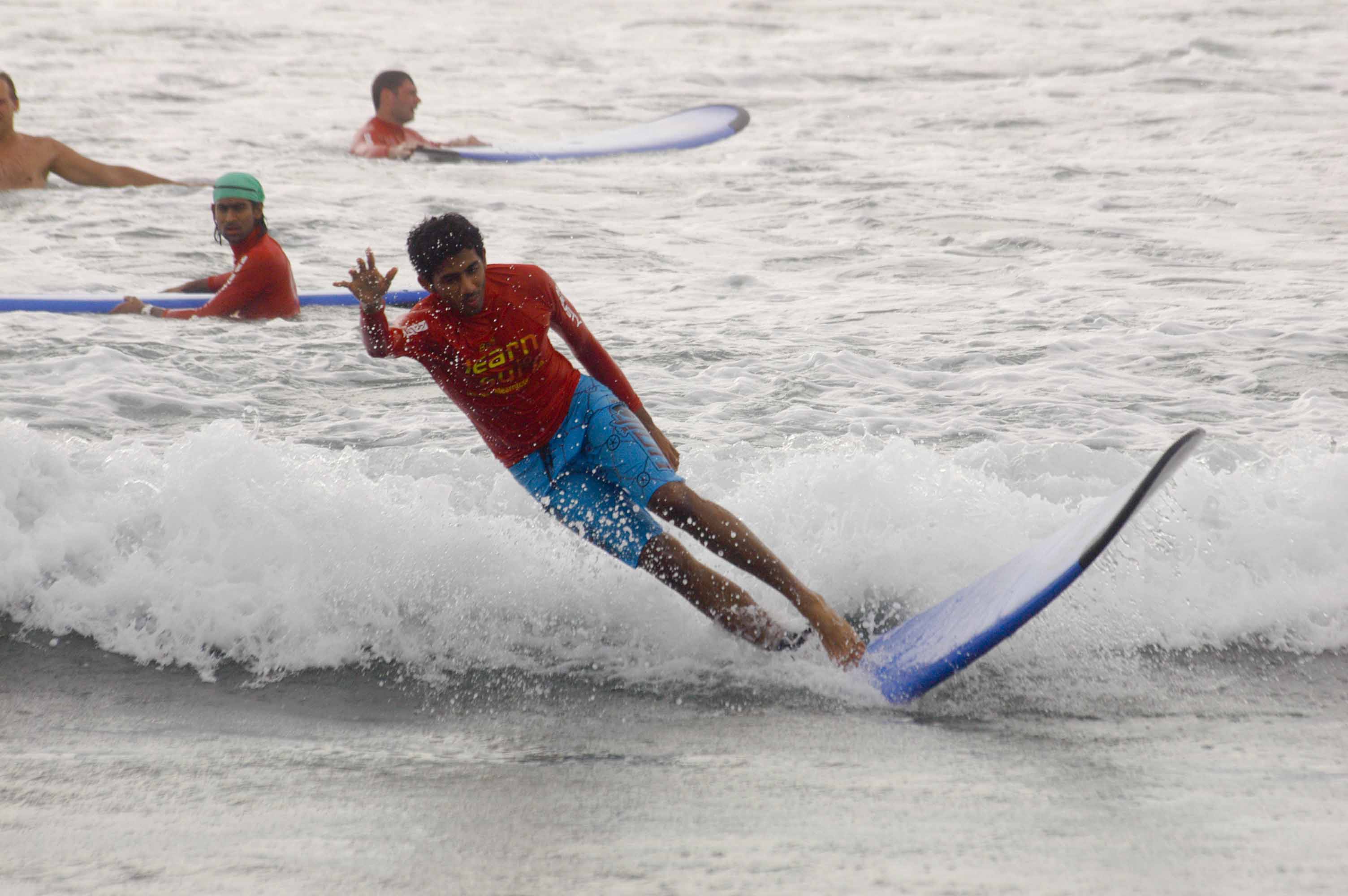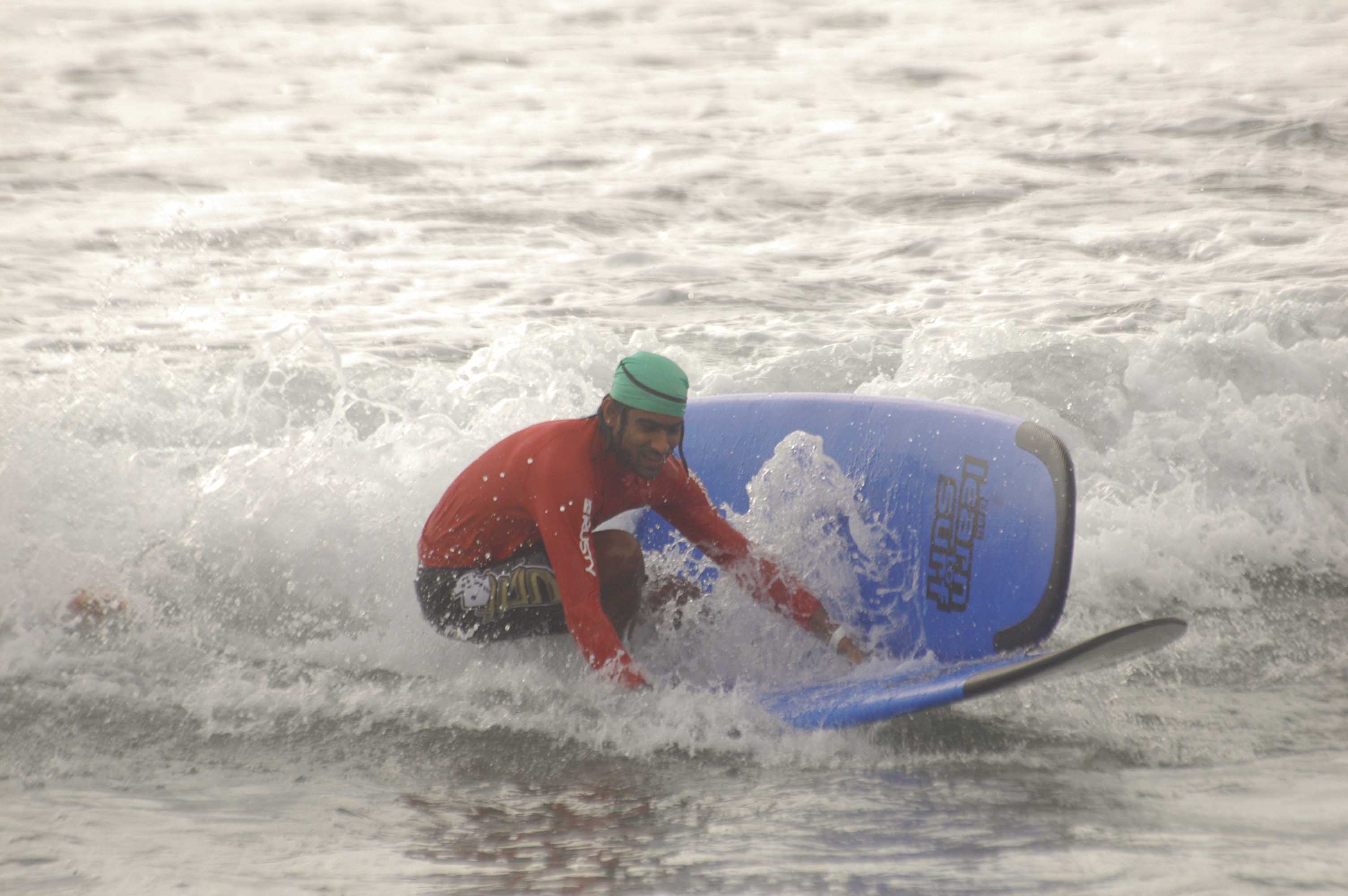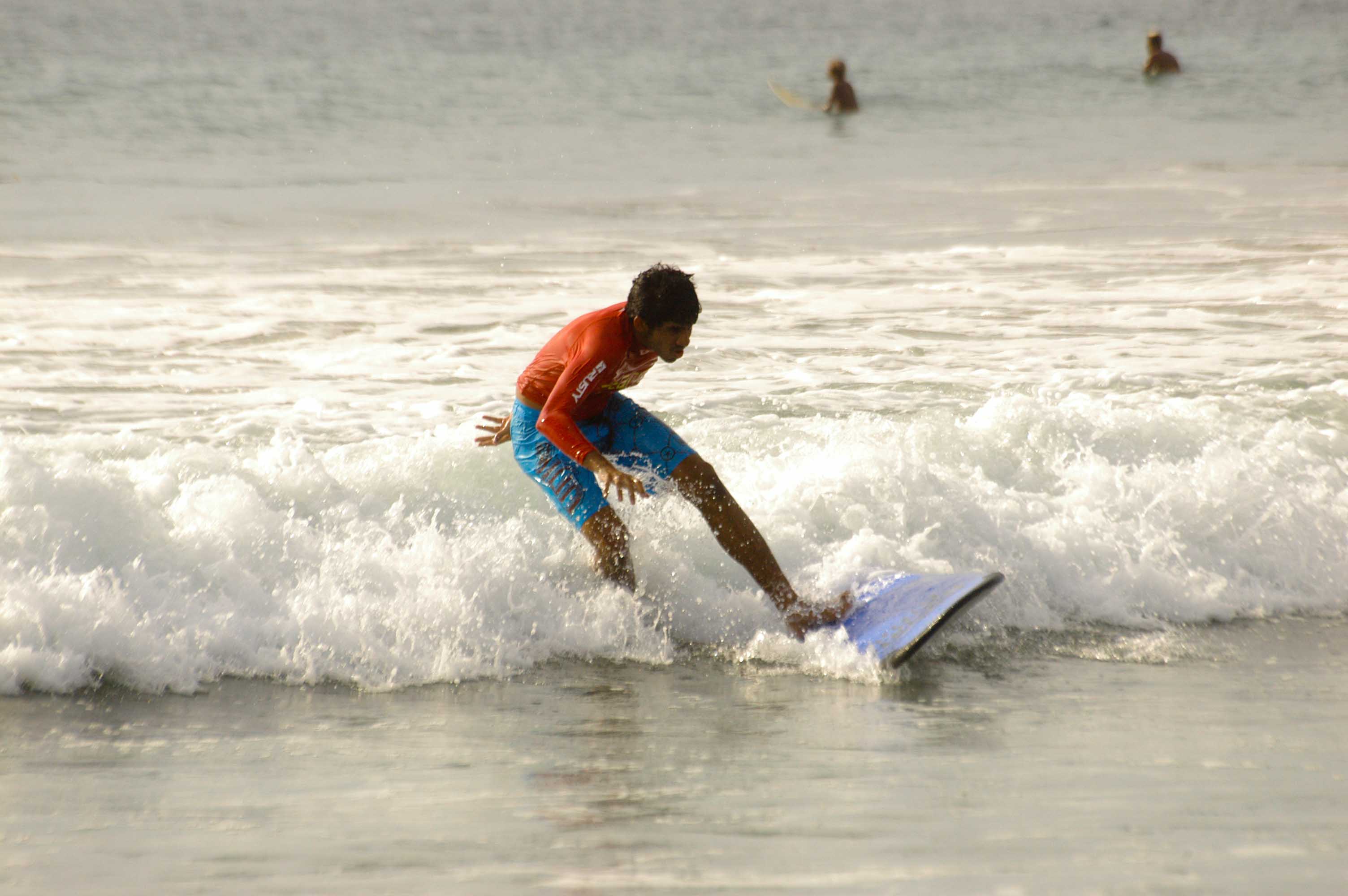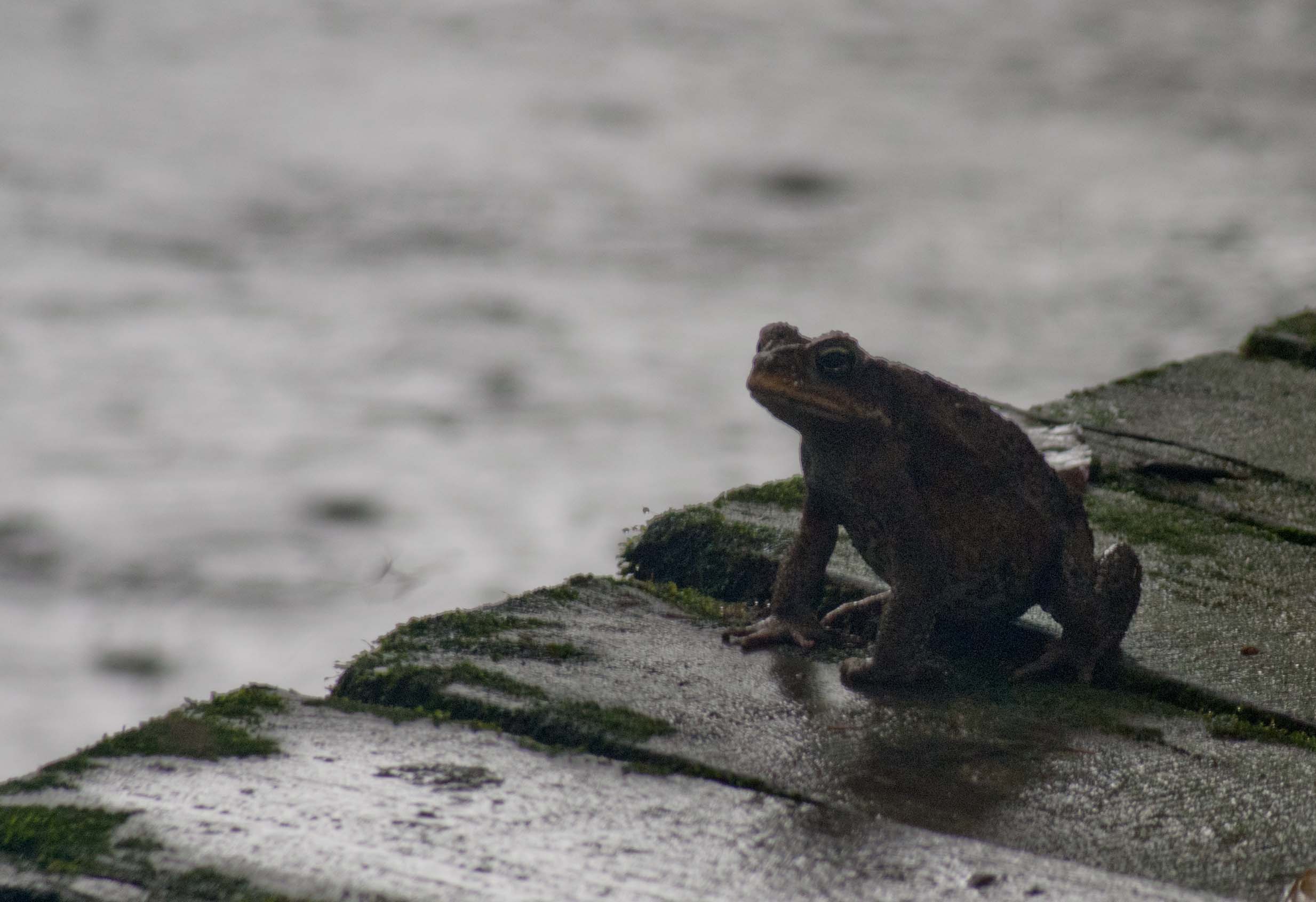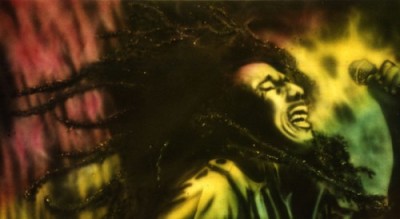 6 of 7 species of sea turtles are either threatened (Loggerhead), endangered (Olive Ridley and Green) or critically endangered (Leatherback, Kemp’s Ridley, and Hawksbill). No information is available on the status of the Flatback turtle. As a result of this several conservation projects have sprung up across the world.
6 of 7 species of sea turtles are either threatened (Loggerhead), endangered (Olive Ridley and Green) or critically endangered (Leatherback, Kemp’s Ridley, and Hawksbill). No information is available on the status of the Flatback turtle. As a result of this several conservation projects have sprung up across the world.
You might wonder why there’s a hoo-haa about sea turtles when we’ve got bigger problems like polar bears and melting ice caps to worry about. Sea turtles are an integral part of the marine eco system. They (and manatees) eat sea grass and keep sea grass short. Sea grass needs to be short in order to remain healthy and also provides a perfect breeding ground for other marine species. Far fetched as it may sound, turtles also are responsible for flora and fauna in some deserts. An estimated 150,000 pounds of turtle eggs were laid on the beaches of Florida last year alone and eggs that don’t hatch provide vital nutrients to the soil and encourage the growth of plants.
Although this bout with extinction isn’t entirely the fault of humans, we’re not blameless. Turtle eggs and meat have been considered delicacies throughout the World. Turtles have been poached for their shells from time to time as well.
Guyana has its very own Turtle conservation project that has been running for the past 25 years. Located in a remote region of Guyana, Shell beach sits on the border of Guyana and Venezuela. If you spend enough time on the beach you’re sure to spot speedboats making quick drug runs across the border. Getting to Shell beach however, is quite a challenge. The daylong trip requires a bus from Georgetown to Parika, boat across the Essequibo to Supernaam, bus to Charity and finally a 5-hour speedboat ride to Shell Beach. This 5-hour boat ride involves navigating ‘the river of 99 turns’ and is unforgettable for the still black water and the pristine untouched banks. While exceptionally long, the trip is part of the adventure and if you’re lucky you’ll get to see otters, scarlet ibis and river dolphins before even getting to the turtles.
Sand on shell beach contains tiny broken up pieces of shells, which probably gives the beach its name. Mosquito beach would be the obvious name if an alternate name were necessary. 6pm and the mosquitoes come out and attack every moving object in sight demonstrating a clear lack of respect for insect repellant and DEET.
Once you put the mosquitoes behind you, a 4 km trek down the beach gives you the chance to spot turtles laying their eggs along the shore. Turtles lay their eggs at night since the usual predators (seagulls, birds, dogs etc) aren’t around. They hobble onto shore and start digging a wide foot deep body pit. One this is complete, they use their hind flippers to dig a small hole that’s up to another 2 feet deep. Flippers are made to swim and not dig, and so progress is painfully slow. All through this process, the turtles seem to go into a trance focusing only on the task at hand and completely ignoring the tiny bunch of curious tourists. Once the hole is ready, the turtles lay anything between 50 to 200 eggs (depending on species) and then cover the eggs with sand, pressing down each mound to ensure that the eggs are well packed. The turtle then flicks around sand in a wide area to protect the location of its eggs and heads back to the sea. The entire process takes between 30 minutes to 2 hours depending on the turtle’s skill.
Eggs take 2 months to hatch and little turtles have an evolutionary drive to dig their way out of the sand at night, avoiding predators and heading towards the brightest light source (supposed to be the moon). However, bright lights on several beaches have contributed to the confusion among the hatched turtles causing survival issues. Added to this, turtle eggs are a rich source of protein and are easy pickings for predators if they manage to find the eggs. The dogs at Shell beach try to dig up the eggs for a tasty treat. (However, the jaguars in the adjoining forest are always on the lookout for a stray dog for a tasty treat.) It takes decades before these young turtles reach maturity and start reproducing. One in about a hundred hatched turtles reaches maturity. The leatherback turtles are the biggest turtles and the leatherbacks we spotted at Shell beach were over 6 feet long.
A typical turtle-spotting trek would last 5-6 hours and would depend on the tide since turtles prefer to come out at high tide to prevent the waves from an advancing tide uncovering their eggs. Turtles are very sensitive to white light (but can’t see red light). Scrambling over toppled coconut trees on an eroding beach with only a little red light can be a challenge but the rewards are worth the effort.
Guyana, Costa Rica, Trinidad & Tobago, Surinam and Sri Lanka come to mind when talking about endangered sea turtles. Have you had the chance to see turtles lay their eggs elsewhere?
Georgetown – On a Bicycle
Cycled around the city taking videos of various scenes with my phone camera. This is what a typical day in Georgetown looks like..
While the two others on the Bali trip (they called themselves the Dynamic Duo) were getting their basic dive certification, Brit and I decided to cheat our way to a PADI advanced certification. After copying each other’s wrong answers for our ‘theory’ component we now only had five fancy dives in two days between us and a new card to certify us as advanced divers and clinically mad.
Underwater Navigation
This was an altogether more boring dive but probably very important. Despite traversing a perfect square on a sandy patch (under water mind you) with just a compass, we still can’t navigate to save our lives literally. Oh and apparently there was a black-tipped shark in the waters while we were busy navigating. The thought of having to return to the same waters in the night later was a bit worrying.
The other highlight of this dive was the most complex conversation I’ve had under-water.
Me – Water cold here. But warm here.
Brit – Like in that episode of Planet Earth.
Me – Thermokline!
Brit – Yea .. there is a lot of marine life in thermoklines. Watch out.
Me – High five!
Just remember that this was all done through sign language coz you can’t talk under-water!
Night Dive
This was truly an unforgettable experience. I’ve never been more focused on a dive before. It was one of those things that make you go “Why am I doing this again?” We saw some interesting organisms but the real thrill came when instructor asked us to switch off our torches – I pretended to not understand. Then he did it himself. The dark swallowed us.
In this modern day, we don’t experience genuine total darkness. This was a different level. 20m underwater, the cool night sea engulfed us in a silent suffocating envelope of black interrupted only by the chortle of our bubbling breath. Then the lights came back on! The two of us were constantly checking our backs to see if that dastardly shark was anywhere. Good dive to end the day!
Wreck Dive
The next day’s programme was promising and therefore inevitably disappointing. The USAT Liberty was a world-famous wreck dive site which looked churlish and average that day. We did hit 30 m depth but a downward sea-current challenged me a great deal. I eventually made it back but in an ungainly fashion and really off-course.
Deep Dive
Our deep dive off the side of a cliff under water turned out to be a lot less dramatic than I hoped. It was a deep fall alright but when you are suspended 30 m under water, being on the side of a sheer cliff isn’t that spectacular. It would have been even less memorable had it not been for me almost starting my dive without my cylinder open. A few metres into the water lugging a heavy ass cylinder and weight-belt, I realized I had no way of inflating my suit to stay afloat. Furiously back-pedalled to shore and rectified the situation. At the end, we were certified and so were the Dynamic Duo.
21 dives into my amateur diving career and I still treat the underwater with a healthy dose of skepticism and fear. I wear gloves lest I touch something evil and obsess about my gear. I constantly check my air gauge and breathe heavy to convince myself I am not drowning. All that fussing and my high metabolism combine to rob me off at least 10 minutes of dive time – I use up the air too fast!
Interesting fact: an empty aluminium cylinder (since it is supposed to contain life-saving air, empty is not good!) is very buoyant and causes you to surface uncontrollably.
Diving is not for everyone – and probably not for me. I can say with great confidence that I am not a natural but I have persisted and progressed. I can see myself slowly accumulating dives over the coming years till the proverbial shark or decompression illness ends my run. With me, it might even be a rogue unopened cylinder valve!
I’ll confess that the heading was a blatant lie. Contrary to popular opinion, Kaieteur Falls isn’t the World’s largest single drop waterfall. It’s the ‘single-drop’ tag that confounds the occasional well-read tourist. There is no such thing as the World’s largest single drop waterfall. Most of us are aware that the world’s largest waterfall is Zimbabwe’s Victoria Falls and world’s highest waterfall is Venezuela’s Angel falls. Kaieteur may not be the largest or the highest but nevertheless is one of the most powerful waterfalls in the World (not to mention beautiful) owing to an extraordinary mix of height and volume of water. Quite complicated.
Day 1 – Georgetown to Amatuk Falls
As with most adventures from Georgetown, this one starts off with an indecent number of people being shoved into a tiny little mini van with barely enough room to breath, let alone move. Roads extend only up to 50km out of the city after which the minivan has no option but to plough through the mud. Fast-forward 8 hours and a frazzled bunch of hikers stepping out of a minivan in Mahdia doesn’t make a pretty sight.
Mahdia is a tiny little mining town with populations varying between 3,000 and 10,000 (depending on gold rush season). As with most mining towns, its quite difficult to find a building that’s not a bar. A beer later, we get our first glimpse of the beautiful Guyanese rainforest from the back of a 4×4 that takes us to the Potaro River. Cruising the peaceful river at dusk is amazing. Thousands of fireflies dotting the banks add to the experience. Foam on the river tells us that we’ve reached Amatuk falls and we put up our hammocks (with much difficulty) to camp for day one. A bottle of El Dorado rum provides liquid courage before round 2 of the hammock battle commences. Finding the sweet spot of a hammock is tricky business. Don’t believe me? Try spending a night in a hammock.
Day 2 – Amatuk Falls to Tukeit
The morning brings a heavy downpour. Did we really expect to get through the rainforest without getting wet? We finally give up and head out in the rain to visit a diamond mine on Amatuk Island. Loading our stuff onto another boat (on the other side of Amatuk falls – smart eh?) we get back on the river. A pit stop at a river dredge provides momentary respite from the rain.

Rivers are one of the most erosive forces on this planet especially in early stages when they’re mountain streams full of energy (potential). As a result, they end up eroding rocks and dragging the gravel along as silt. River dredges operate by scraping the bottom of a river and sucking up all the loose gravel. This gravel is then flushed through a sifting machine that gets rid of lighter rocks and retains the heavier ones. These heavy rocks and then taken to a plant for gold to be extracted. The only flaw with this mechanism is that when you filter out lighter materials, diamonds get thrown away as well. This gives rise to a secondary industry. Lacking proper diving equipment, locals use tubes attached to an air pump to dive to the bottom of the river. Having no training or knowledge of diving safety procedures, they often fall victim to the bends.
Somewhere along the way we get our first glimpse of Kaieteur. Our guide explains that the next time we see the falls; we’ll standing right beside it. Our boat drops us off and we scramble along the rocks to visit Big Stone Waterfall but this being the monsoon season, our hike quickly turns into a swim. Fortunately at the time we didn’t know that we were swimming through electric eel infested waters and we happily swam to camp. Our hammock skills were noticeably better.
Day 3 – Tukeit to Kaieteur
 The trek from Tukeit to Kaieteur involves hiking past “Oh My God” mountain named for its steep slopes. The hike through this rainforest constantly reminds us that we’re in the middle of nowhere. Although Kaieteur is the top tourist attraction in Guyana, we hadn’t bumped into a single tourist this far. Hiking through pristine forest abruptly gives way to a clearing on the top of the mountain and in the distance we hear the roar of Kaieteur. Our first view of Kaieteur Falls up close triggered a photo frenzy that lasted 10 mins before we realized that we had a day to get to know this waterfall better.
The trek from Tukeit to Kaieteur involves hiking past “Oh My God” mountain named for its steep slopes. The hike through this rainforest constantly reminds us that we’re in the middle of nowhere. Although Kaieteur is the top tourist attraction in Guyana, we hadn’t bumped into a single tourist this far. Hiking through pristine forest abruptly gives way to a clearing on the top of the mountain and in the distance we hear the roar of Kaieteur. Our first view of Kaieteur Falls up close triggered a photo frenzy that lasted 10 mins before we realized that we had a day to get to know this waterfall better.
Most tourists to Kaieteur take the easy way out and fly to the falls. A park guide ushers them around for 45 mins before bundling them back into the plane. This doesn’t do the falls any justice. The magnificence of the falls strikes you at first sight, but spending an hour alone at the waterfalls observing the forces of nature at their mightiest is a chance that rarely comes our way. The sheer size and raw power of this waterfall makes you question your significance on this planet.
Day 4 – Kaieteur to Georgetown
 Bullfrogs are found (and heard) everywhere though they’re nowhere as good looking as their distant cousins – the golden frog. Bromeliads grow in abundance here (pineapple is part of this family) and store water by using their leaves as a catchment. The golden frog lays its eggs between the leaves of these huge bromeliads. These small frogs are quite jumpy and we weren’t able to find a photogenic one.
Bullfrogs are found (and heard) everywhere though they’re nowhere as good looking as their distant cousins – the golden frog. Bromeliads grow in abundance here (pineapple is part of this family) and store water by using their leaves as a catchment. The golden frog lays its eggs between the leaves of these huge bromeliads. These small frogs are quite jumpy and we weren’t able to find a photogenic one.
Having had our fill of Kaieteur, we catch a little plane back to Georgetown. Although this plane is quite old, the style of flying is probably where air travel could get to 50 years down the road. People hop into the plane as though it were the local shuttle bus and the pilot proceeds to take off without much ado. He silently fills in his forms and pretty much ignores me in the co-pilot seat. Having watched the plane make 2 stops, I’m convinced that I could fly one of those. Fortunately it didn’t come to that and we arrive safe and sound back to Georgetown.
A walk down Bali’s Kuta beach and I’m faced with an onslaught of double-digit IQs. The prejudice might have arisen out of flat foreheads and wide-open mouths being evolution’s signals for dumb. Or it might be the bigotry born of jealousy of all those ripped bodies and tanned skin.
Surfing is the ultimate victory of the jocks over the geeks. If you intellectualise the why of surfing, and the learning of the art, you have already lost it for you are not cool enough. As a geek, the rational thing to do is to pretend to be a surfer …. And that’s exactly what we set ought to do.
There is something about taming the waves on a ridiculously large board that screams cool! Even a real surfer’s wipe-out looks rehearsed. It requires an improbable mix of those skills and attitudes that are not at all natural for a middle-class Indian kid.
Childhood Trauma
My father’s refusal to let a wet sandy Vikram back into the car after a trip to the beach took the fun out of entering the water and made it an act requiring great contemplation. Let us say I’ve overcome that by now. But swimming in a surf beach is not just swimming – no goggles, ridiculously salty water, unexpected slaps of waves all make you want to rush back to knee-deep waters near the beach. High fitness levels, upper-body strength, a devil-may-care attitude to scratches and bruises are not inbuilt qualities in folks like me. Most importantly, the grace, balance and co-ordination needed for surfing can only be found naturally in kids who grow up doing stunts like walk on thin ledges, skate-board and jump off walls. Kids who did their home-work on time and attended violin classes are much slower in getting the hang of surfing.
Nevertheless I wanted to learn the basics and so I signed up for a class.
Surfing 101
 My previous attempt at figuring it out on my own in Surfers’ Paradise was a flop, so this was going to be a class with an instructor – the world I used to thrive in!
My previous attempt at figuring it out on my own in Surfers’ Paradise was a flop, so this was going to be a class with an instructor – the world I used to thrive in!
Additional adversities to my surfing dream included an unhealed motorcycle injury on my knee (Oh yes! You need your knee for surfing). My bandana disappeared in the waves really early and left my long hair to join salty water in annoying my eyes. But remarkably I was standing up on the board in no time! Had I already figured this one out?
The “Instructor” (a local teenager) thinks I am ready for step 2 – paddle yourself to get the start as the wave hits you on your backside. Wipe-out de un! Try again with a bit of preparation. De deux! While I was going through hell, Brit (who’d been struggling until then) went past me in a perfect illustration of how to surf! He decided to step up by entering deeper waters – and quickly regretted the decision after being dragged under water for almost a lifetime.
In a while, we were tired, defeated and famished and sounded the retreat.
Encore
The next day we went surfing, I’d developed the illusion that all I needed was a board and time in the water. What followed was a frustrating couple of hours in the ‘wrong’ part of the beach. Surfs were rare and when they came, they took you down really fast. We hardly made a stand! I actually felt like I was unlearning what I’d figured out the last time, and the pro-surfers were making the feeling worse by zipping in and out around us. We made our excuses and left.
Conquering the waves will have to wait another day. And until then, we have these lucky pictures to get our entry to the cool kids club.
White Water Weekend Getaway
White Water is a beautiful little island on the Mazaruni River in Guyana. This island probably got it’s name either from either the white sand or the white tourists (definitely not the water). Just a stone’s throw from Bartica, it serves as a perfect weekend getaway from Georgetown. Don’t forget to take along your swimwear and fishing gear. If you do get bored of this island, you could always jump into a little dinghy and go island-hopping. Beware of jaguars and piranha. We were lucky enough to spot a howler monkey. The best part is that a night’s stay at the guest house on this island will cost you all of US$5.
If you can’t get enough, this island in the sun could be yours for US$300,000.
Pork knockers once referred to miners who would pack a shovel or spade and set off into the wilderness for months on end, looking for that elusive diamond in the rough. Food would mainly comprise of salted pork leading to the name – pork knocker. The original bunch pork-knockers are now a dying breed. They’ve been replaced by a new generation who now rely on technological advances to get the job done. Don’t lost hope yet. 6 simple steps stand between you and more riches than you could ever imagine.
Step 1: Pick a Spot
This is the make or break moment for most diamond miners. Choose a wrong spot and you’re out of business. Diamonds are formed by high pressure acting on carbon over millions of years. For this reason, they’re usually found deep under the surface of the earth. Erupting volcanoes are good at spewing out diamonds but have been known to melt them into graphite in the process. Rivers are troublemakers as well. They erode rocks and deposit diamonds along their banks. Isolated forests along the banks of the Essequibo river are the best for diamond mining in Guyana. It means no one’s ever been there before and no one’s ever going to drop by unannounced, asking for your permit.

Step 2: Clear Everything and Start Digging
Rainforests, as can be expected are not ideal especially when they’re seated right over your mine. Get rid of them. Start digging through the topsoil until you get to the rocky layer below the sand. 10m under should be a perfect place to start.

Step 3 (optional): Hire Minions
If you don’t want to get your hands dirty, you’ll have to get yourself a crew. Tempt them with a percentage of the spoils and you’ll have tons of people begging to be a part of your team. Kids drop out of school for opportunities like these. A dining tent and a sleeping tent and that’s all they’ll ever need. Be warned though, adult supervision is required at all times.
Step 4: Get a Machine
For a few million Guyanese Dollars (10,000 USD) you’ll be able to get your hands on a state of the art, home made, diamond-excavating pump. The logic is flawless. Pulverize the rocks with high-pressure jets of water and sit back while your machine does the rest and pumps the water and gravel mixture to your filtration unit.
Step 5: Don’t Throw Away the Diamonds
Diamonds are heavier than all other rocks. And your filtration unit knows this all too well. The gravel and water mixture is filtered and heavy rocks are collected while the rest is pumped into a man made pond. Water from this pond is then re-used for the high-pressure jets in step 4.

Step 6: Rum, Women & Song
Rum, women and song are synonymous with miners. Guyana isn’t the exception. Once you’ve managed to sort the diamonds from the rubble, you’ll have a decent little pile of money to fund all your bad habits.
| The Natural vs. Fake Debate
It would be criminal to ignore this long-standing feud between the ‘classical’ and the ‘romantic’ approaches to selecting a diamond. I’m going to side with the classical view and go for synthetic lab manufactured diamonds for the following reasons
|
The morning begins at 6:30am when frantic packing for my visit to Bartica begins. Bug spray, camera, notepad and change of clothes in a bag – I’m good to go.
Today’s Job
As a VSO volunteer working at Youth Challenge Guyana, part of my job involves setting up tools to monitor the impact of the National Volunteering Teachers Programme on the Community. This Programme recruits, trains and assigns volunteers to schools in remote regions hoping to improve the quality of education across Guyana. The purpose of my visit is to understand the current system used to monitor the impact of this programme so that efficient monitoring systems can be developed and put in place.
Meet G-manGermaine has the responsibility of babysitting me on this trip. As a programme manager at Youth Challenge Guyana, Germaine is responsible for the National Volunteers Teachers’ Programme. He cheerfully puts up with my meaningless banter, patiently explaining how things work on his programme as well as in Guyana. |
 |
Getting there – 3 hours
 30 mins – Boat across the Demerara. The first 10-minute boat ride takes me across the Demerara. However, the wait for the boat to fill up takes 30 mins. No boat leaves the dock until every life jacket houses a man/woman/child who fervently hope that the little orange piece of foam will save their lives (if it comes to that). Under no such false impression, I discard the life vest and find myself admonished for this behavior. The life vest is then thrown back at me and I’m forced to comply. Boatman 1 – Jason 0.
30 mins – Boat across the Demerara. The first 10-minute boat ride takes me across the Demerara. However, the wait for the boat to fill up takes 30 mins. No boat leaves the dock until every life jacket houses a man/woman/child who fervently hope that the little orange piece of foam will save their lives (if it comes to that). Under no such false impression, I discard the life vest and find myself admonished for this behavior. The life vest is then thrown back at me and I’m forced to comply. Boatman 1 – Jason 0.
45 mins – Taxi to Parika. Too easy.
1 hour– Boat across the Essequibo to Bartica. Having received a lesson in boat etiquette on the earlier ride and with G-man for protection, this one’s a breeze.
15 mins– Boat from Bartica to Karrau Creek Primary School
30 mins – Delays due to modes of transport departing ‘just now’
The School Visit
Interviews with the Regional Education Officer, Head Teachers and National Volunteers helped paint a better picture of how the programme operated. National volunteers staffed at schools in the interior face numerous challenges
- Lack of infrastructure – With roads being constantly washed away by rain, accessibility is a huge problem. Added to this is the lack of cellphone signal in some places (never mind the internet), causing problems with communication.
- Heavy workload – Many schools are staffed with 1-2 teachers which means that National Volunteers sometime teach several grades in the school.
- Acceptance by the community – Some communities question the necessity of education and schooling, preferring to send their kids to the fields instead. A lot of friction in these communities makes life difficult for the volunteers.
Added to these challenges is the critical and essential (but boring) task of filling up monitoring forms to provide accountability to donors. Based on the insights from this visit, we hope to make this task painless.
Bartica
Located at the confluence of the Essequibo and Mazaruni rivers, Bartica is a gold town famous for its annual Easter Regatta (boat races). Beautiful views of a blue sky over the river can change in an instant as storms creep up and turn the entire landscape grey. Spending a night out in the town, you’re bound to meet a miner or in my case, the owner of a gold mine. Money flows as freely as the rum and a good time is guaranteed.
If someone tells you that Georgetown’s quiet – they’re probably right. On the other hand, if they tell you Georgetown’s boring – they’re definitely hanging out with the wrong people. Be warned; most of activities listed below require the participation of your entire herd.
Lime at the Seawall
 Liming refers to the art of doing nothing. This term expresses the true essence of the Caribbean way of life – slow down and breathe! Nowhere is this more evident than on the Seawall on a Sunday evening. With half of Georgetown under sea level, the biggest gift the Dutch gave the Guyanese was a tiny 4 feet high wall along the coast to keep sea water out. This is the perfect place to catch the sunset from. Easter being the biggest festival in Guyana, sees the sky at the seawall dotted with hundreds of kites. If you’re not adverse to a small walk, head over to the 19th century lighthouse for a panoramic view of Georgetown.
Liming refers to the art of doing nothing. This term expresses the true essence of the Caribbean way of life – slow down and breathe! Nowhere is this more evident than on the Seawall on a Sunday evening. With half of Georgetown under sea level, the biggest gift the Dutch gave the Guyanese was a tiny 4 feet high wall along the coast to keep sea water out. This is the perfect place to catch the sunset from. Easter being the biggest festival in Guyana, sees the sky at the seawall dotted with hundreds of kites. If you’re not adverse to a small walk, head over to the 19th century lighthouse for a panoramic view of Georgetown.
Swim at a black water creek
 The black water I’m talking about isn’t a euphemism. It’s real. And one of the strangest things I’ve ever seen. Water saturated with minerals causes it to look black and creeks of eerie looking black water can be found at numerous spots away from the coast towards the interior. If the heat gets unbearable, a refreshing dip and a sip of some black water might be the cure. Don’t let the frogs bother you. They’re just interested in the insect buffet.
The black water I’m talking about isn’t a euphemism. It’s real. And one of the strangest things I’ve ever seen. Water saturated with minerals causes it to look black and creeks of eerie looking black water can be found at numerous spots away from the coast towards the interior. If the heat gets unbearable, a refreshing dip and a sip of some black water might be the cure. Don’t let the frogs bother you. They’re just interested in the insect buffet.
Mini-bus trip
My Guyanese friends might not agree with me on this one but one of the most entertaining ways to explore the city is to hop onto a mini-van. With their ever-changing routes, you could see a fair amount of the city riding the same bus everyday. Once you’ve gotten past panicking at ever near death experience (around 2 per ride), this is where you’ll get a first hand view of the idiosyncrasies of the Guyanese culture. 3 out of 4 times you’ll have a drunk on board before noon and the rest of the crowd are quick to pounce on any inappropriate behavior (such as passing out on the only door or on a fellow passenger).
Laugh, sing and dance at the National Cultural Centre
There’s always something going on at the National Cultural Centre. Their strictly enforced formal dress code doesn’t keep away the fun loving crowd (or the hooligans). Serious performances are boring and pop music is the only way to keep the crowd happy. An eclectic mix of Jamaican Dancehall, Trinidadian Soca, American R&B and a token Bollywood song (to calm Indian nerves) is to be expected – be it a contemporary dance concert or a fashion show. If you’re lucky enough to have a comedian show up, there’s not going to be a free seat in the house. Are the comedians funny? No idea. Can’t understand a word.
Feed the Manatees at the Botanical Gardens
 Manatees, commonly referred to as the sea cow are huge grass eating mammals. Given their huge appetite, I’m not sure the zoo keepers are up to the task (see image to the right). If feeding the manatees were something your grandma would do and you need more excitement, then just line up with the school kids and throw rocks at the cougars and lions at the zoo next door. If you don’t want to get too hands-on, you could join the school teachers and observe how the animals react to stones raining down on them (they hide in the corner and pray for real rain). Guyana is a birdwatchers paradise and the bird-watching tour at the Botanical gardens definitely goes onto the list. How do I find and book this tour? That’s still a mystery to me.
Manatees, commonly referred to as the sea cow are huge grass eating mammals. Given their huge appetite, I’m not sure the zoo keepers are up to the task (see image to the right). If feeding the manatees were something your grandma would do and you need more excitement, then just line up with the school kids and throw rocks at the cougars and lions at the zoo next door. If you don’t want to get too hands-on, you could join the school teachers and observe how the animals react to stones raining down on them (they hide in the corner and pray for real rain). Guyana is a birdwatchers paradise and the bird-watching tour at the Botanical gardens definitely goes onto the list. How do I find and book this tour? That’s still a mystery to me.
Catch a cricket match at the National Stadium
 Guyanese love their rum and they love their cricket. Most cricket matches are sold out and all Government offices allow people to skip work if they produce tickets to the match. The drums, the cheerleaders and the crowd will make the experience unforgettable. Take along a cooler with rum or beer and you’re set. Don’t forget to grab some ‘cow face’ during the drinks break. Oh and if you don’t understand cricket, its not a problem. This isn’t about the cricket.
Guyanese love their rum and they love their cricket. Most cricket matches are sold out and all Government offices allow people to skip work if they produce tickets to the match. The drums, the cheerleaders and the crowd will make the experience unforgettable. Take along a cooler with rum or beer and you’re set. Don’t forget to grab some ‘cow face’ during the drinks break. Oh and if you don’t understand cricket, its not a problem. This isn’t about the cricket.
Drink at a rum shop
Rum was invented in the Caribbean. The world’s best rum is brewed in Guyana. Seems fitting that rum shops should be the Country’s most popular pastime. The common philosophy is that no man should have to walk more than a block to get to a rum shop. If you’re looking for a local rum shop, loud music in a residential neighborhood is your first clue. Don’t be fooled by its mom-pop grocery store appearance. That’s just a daytime disguise to help the alcoholics deal with their guilt. Beer being cheaper than coke is the second dead giveaway. 3$ will buy you 250mL of rum and a 500mL of coke.
Wine at The Edge
If drinking in a corner’s not your thing and you’d like to shake your booty a bit, you need to learn to wine. I’m talking about the dance. Women are required to bend forward and place both palms on the floor (ideally) and shake their booty, while the guys stand behind their woman and groove to the beat. Most countries would consider this more than a bit suggestive, but not so in Guyana. If you drop by at the Edge or any other club, you’ll soon realize that any other dance moves are definitely out of place.
Shop at Stabroek Market
 All mini-buses go to Stabroek market, which is the epitome of chaos. Conductors physically trying to load you into their mini-van, musicians on the road, barbers on the footpath, vendors everywhere – that’s Stabroek market for you. Things get taken up a notch on Saturdays – shopping day for locals. Hidden away behind the market is a little jetty with boats ferrying people across the Demerara River, silently feeding the chaos. You either love it or you hate it. I’m lovin it.
All mini-buses go to Stabroek market, which is the epitome of chaos. Conductors physically trying to load you into their mini-van, musicians on the road, barbers on the footpath, vendors everywhere – that’s Stabroek market for you. Things get taken up a notch on Saturdays – shopping day for locals. Hidden away behind the market is a little jetty with boats ferrying people across the Demerara River, silently feeding the chaos. You either love it or you hate it. I’m lovin it.
Is there something I don’t know about? Let me know, and I’ll throw it into my list.
 Guyana is a land of diverse people – Indians, Africans, Portuguese, Chinese all brought to the Continent by colonial rulers. Needing a way to communicate, the slaves combined their language with the language of the rulers to form an entirely new language called Creolese. Creolese though oringally Dutch based shifted to an English based language (once the English threw the Dutch out) and is infused with words and phrases from various other languages.
Guyana is a land of diverse people – Indians, Africans, Portuguese, Chinese all brought to the Continent by colonial rulers. Needing a way to communicate, the slaves combined their language with the language of the rulers to form an entirely new language called Creolese. Creolese though oringally Dutch based shifted to an English based language (once the English threw the Dutch out) and is infused with words and phrases from various other languages.
A few simple steps will help you convert your English to a more swaggerlicious (stylish) Creolese. Add to this some dreadlocks and you’ll be ready for the Caribbean.
Pronouns
Don’t bother yourself with singular or plurals. They’re all interchangeable. Memorize the word that appeals to you the most in each category and stick with it.
- I, Me – ah, me, mi, we, awi
- You, your – yuh, ayu, allyuh
- They, she, he – e, he, she, im, de, dem, aledem
Grammatical rules (in order of increasing difficulty)
Rule 1
End words with ‘in’ instead of ‘ing’.
Cookin. Talkin. Walkin. Childs play.
Rule 2
Replace ‘th’ with ‘d’. Drop the ‘th’ if this rule is too complicated.
‘The’ becomes ‘de or just ‘e’. Whatever makes you happy.
Rule 3
Insert ‘ah’ at the beginning of your sentence to buy you time to think.
Ah wah dah – what’s that?
Ah whey yuh bin – where’ve you been?
Rule 4
Repeat adjectives for emphasis.
Dis wata de cold cold – This water is very cold.
Rule 5
Replace ‘er’ with ‘a’.
Butter would become butta. You might’ve realized I said ‘wata’ in my last rule. Tricky.
Rule 6
Drop h’s at your own discretion.
Maths would become mats and him would be ‘im. I’ll make no false claims and admit that I’m still in the process of internalizing this rule.
Rule 7
If you’ve gotten this far, the world is your playground. Improvise at will.
‘I told him’ can be
- I tol him
- I told ‘im
- I tell ‘im
- Ah tell e
- I tell e
- Me tell em
- And so on and so forth.
Once you’ve mastered these simple rules, its time to take it to the next level.
Phrases
| Phrase | Translation |
| Nah skin yer teet bai! | Don’t laugh boy! |
| Wappening | What’s happening |
| Dem ah watch me (this is Guyana’s unofficial National Anthem) | They (neighbors) watch every move of mine and judge me. Mainly because there’s rubbish on TV. |
| Jus-now | Eventually |
| Meh de pon de fone | I’m on the phone |
Just when you begin to understand what people are saying, they throw a proverb at you. And…you’re back to hitting your head against an easily accessible hard object.
Proverbs
Everyday buckit a go a well, wan day he battam drap out.
Translates to – everyday the bucket goes to the well, one day the bottom drops out.
Means – Repeated practices (good or bad) will have consequences (good or bad). Did you know that this phrase pops up in Bob Marley’s version of “I shot the sheriff“? Go listen.
Ugly pickney nah gat daddie.
Tranlates to – an ugly child does not have a father.
Means – If something goes wrong, most people will say “it wasn’t me”. In case you’re wondering, this phase is not related to “who’s your daddie.”
Orange yellow but yuh nah know if it sweet.
Translates to – A orange the is yellow isn’t necessarily sweet.
Means – don’t judge everything by appearances.
Guyanese proverbs are guaranteed to help you kill some time at the office.
As with all languages, if you want to sound like Captain Jack Sparrow (substitute your favorite Rasta-man’s name here) there’s only one way – practice, practice, practice!!















